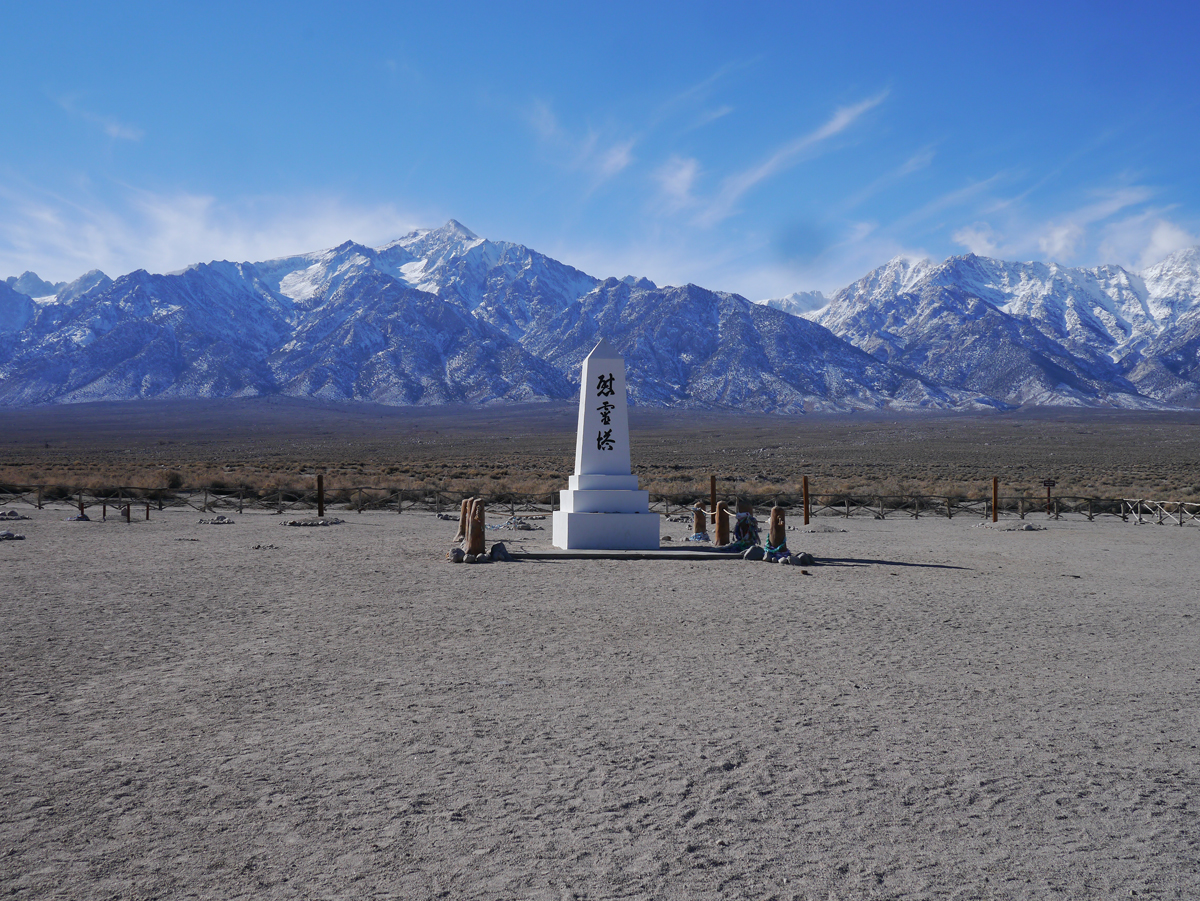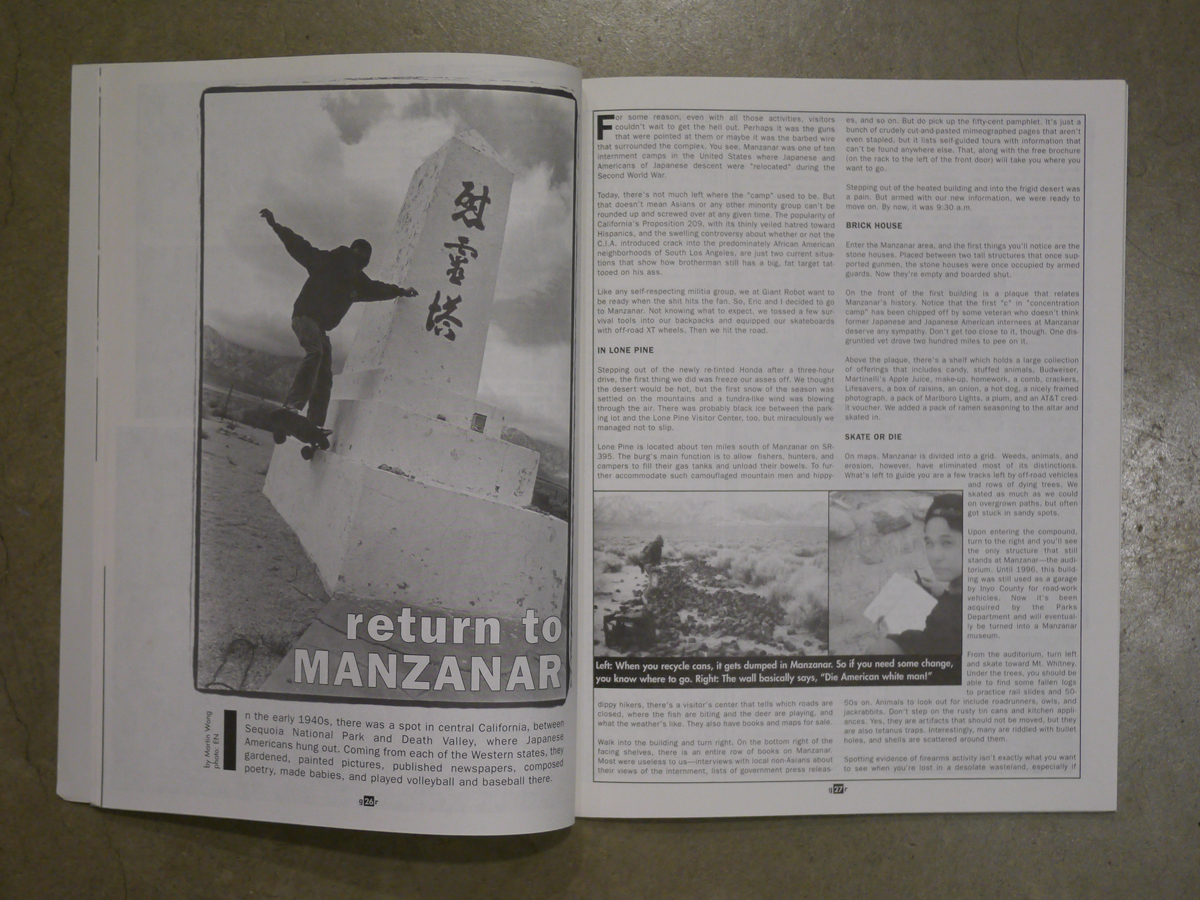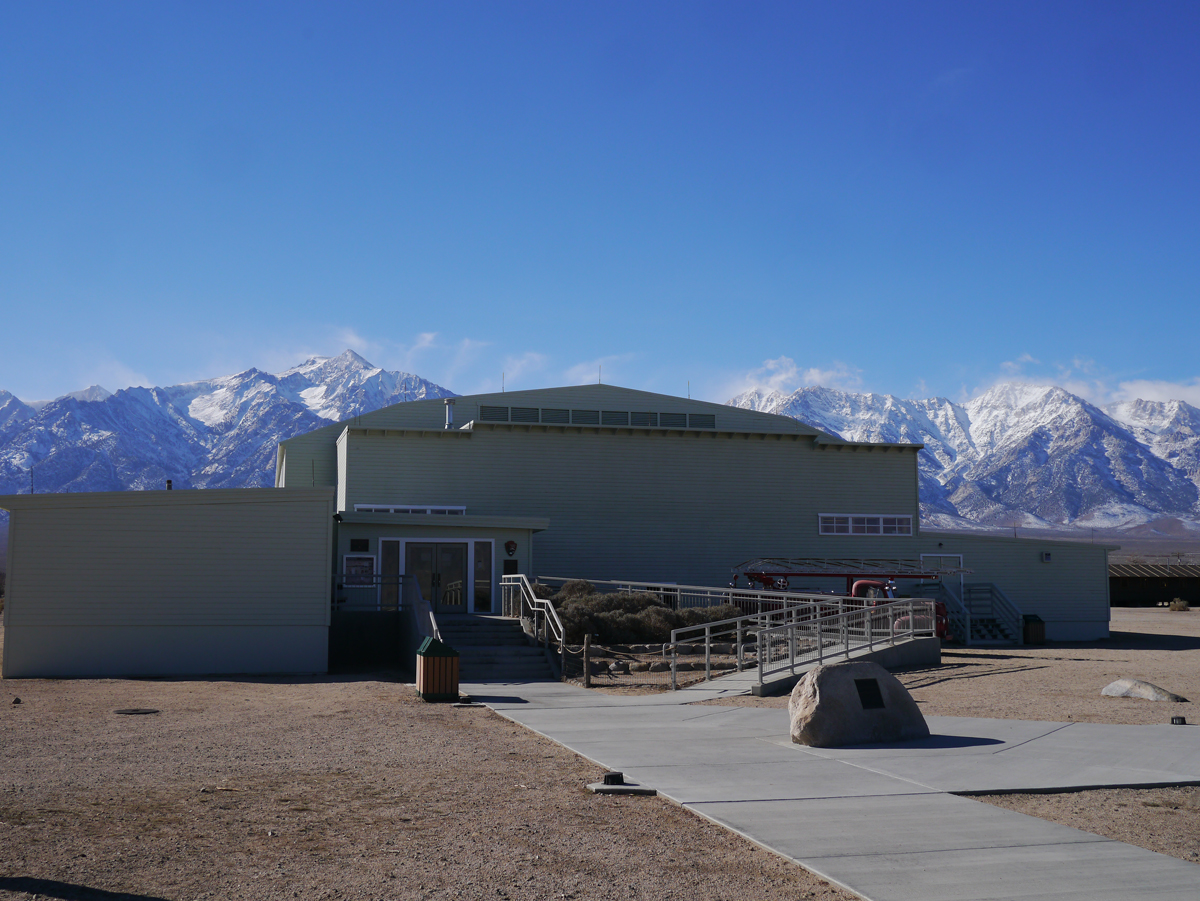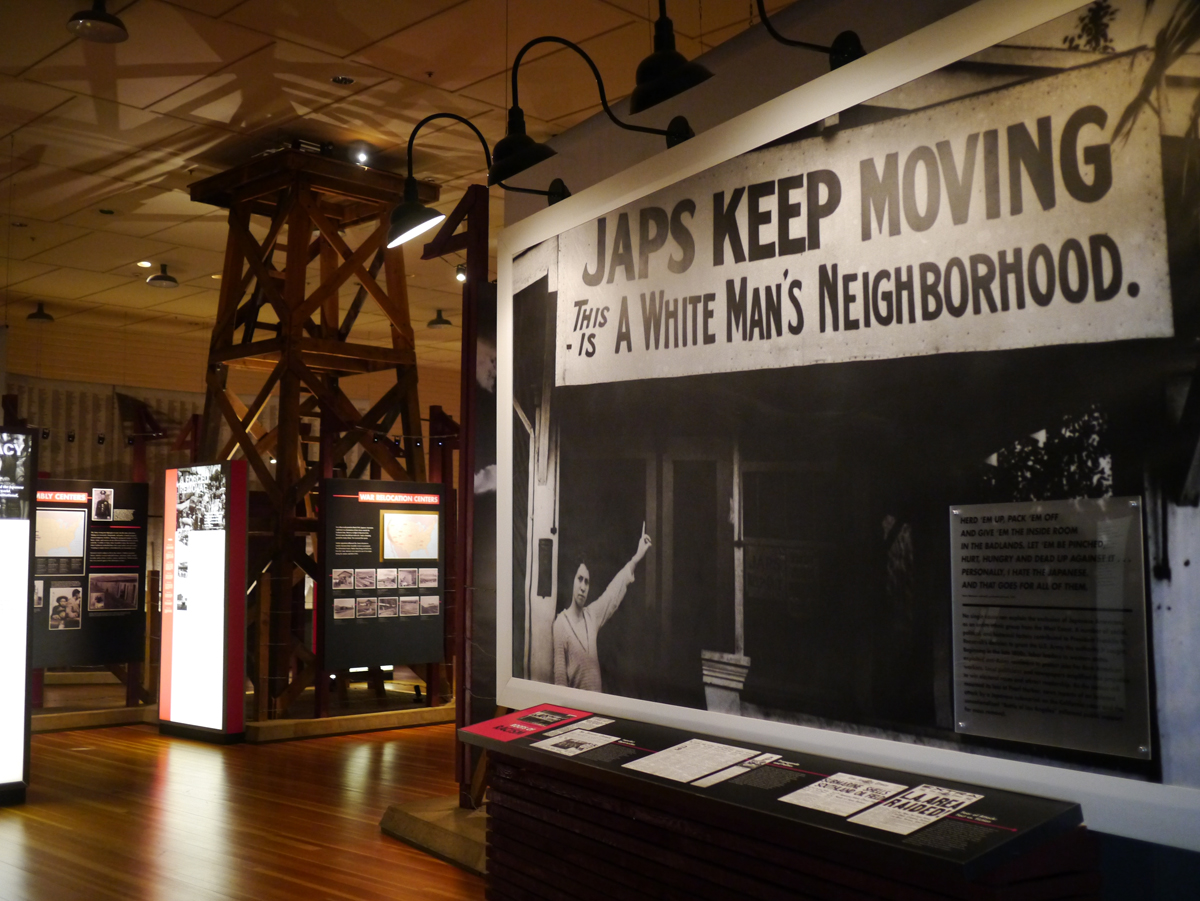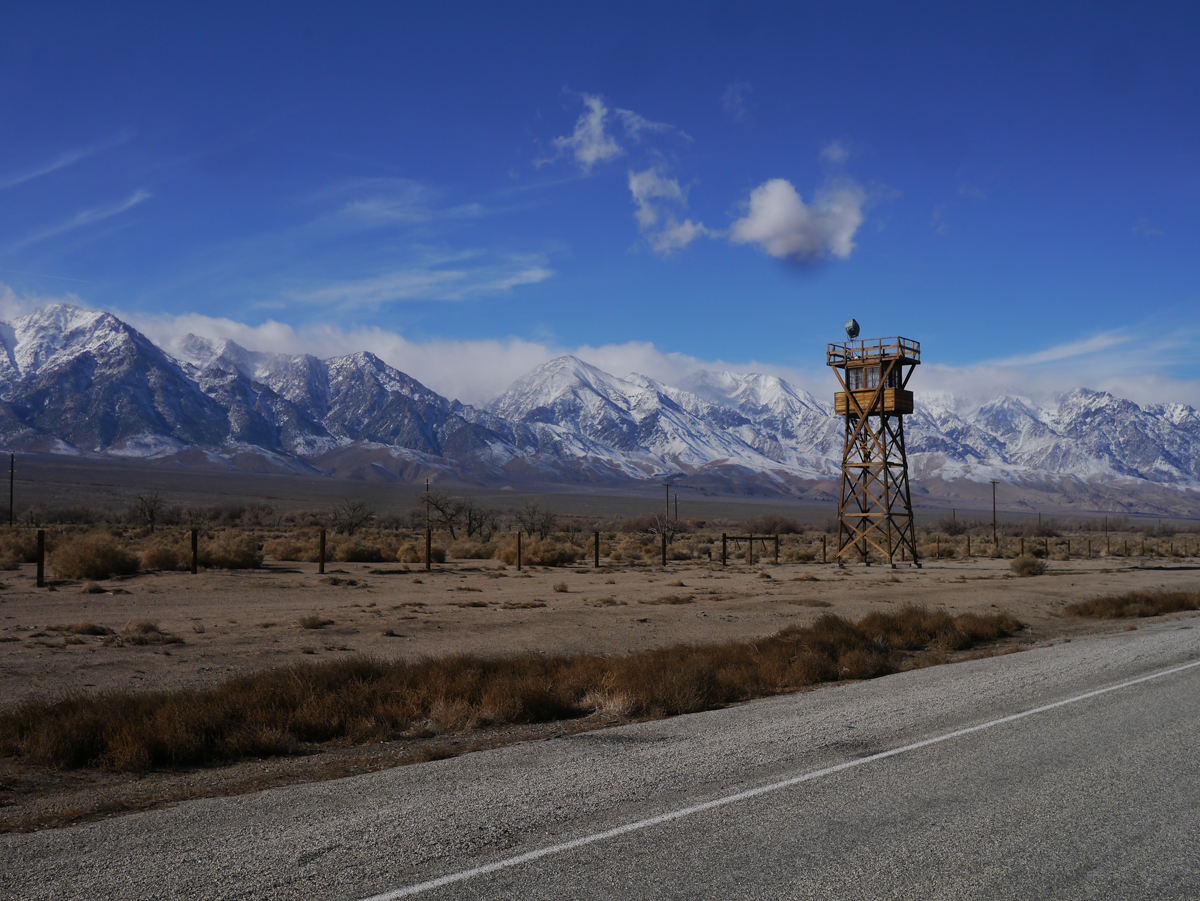Jan 12, 2016 Return to Return to Manzanar
“In the early 1940s, there was a spot in central California between Sequoia National Park and Death Valley where Japanese Americans hung out. Coming from each of the Western states, they gardened, painted pictures, published newspapers, composed poetry, made babies, and played volleyball and baseball there.”
I totally remember writing “Return to Manzanar” for Giant Robot 7 even though it was almost 20 years ago. We had some pages to fill, and I suggested to my friend and co-creator Eric that we visit the site of the Japanese American concentration camp that my family drove by every time we went to Mammoth. He had the great idea of bringing off-road skateboards to make it more interesting and the rest is history.
It was a cool article that both inspired Margaret Cho to say that we reappropriated Manzanar by skateboarding there and elicited criticism from one of the people I interviewed for a sidebar. Sue Embrey, an internee who has conducted pilgrimages to the site, wrote to say that it was disrespectful for us to be skateboarding at the historic and that our article would inspire a bunch of skate rats to invade it. I penned a polite response explaining that it was a lousy skate spot and that we were trying to convey the sad truth about the relocation to new audiences just like she was. The letter must have been effective because I happened to run into her at my local coffee joint and she introduced me to her fellow activists as someone who wrote a great article about Manzanar.
Last week on the way back from a family snowboarding trip, we stopped by the site once more. When I wrote the article, it was a big dirt field with a rough map that one had to fetch at a visitors center miles away. Nowadays there’s a state-of-the-art museum of with multimedia presentations, artifacts, and recreated barracks and guard towers. It’s run by the National Park Service, the bathrooms are very clean, and admission is totally free.
The sensitive subject or government-sanctioned racism and the erosion of civil rights is handled straight on with plenty of photos, recordings, and clippings that show how the Japanese in America were vilified by politicians and the media, setting up conditions that made it possible for Japanese American citizens and resident Japanese to be forced to give up their businesses and belongings, rounded up, and sent into concentration camps during World War II.
The square mile that surrounds the museum is mostly marked off spots with signs such as Baseball Field, Catholic Church, Buddhist Temple, Manzanar Free Press, and Pet Cemetery. There are some barracks that have been built and a basketball court. Many of the sites are connected by a dirt road for hiking or driving, and the main cemetery is well worth a visit. It’s a peaceful, haunting spot with the famous marker that was famously photographed by Ansel Adams and sort of grinded by me.
Our seven-year-old was bummed by this dark segment of history, and had a lot of questions about how it could happen in America. My dad said that many of his Japanese American classmates would talk about “camp” when he was a kid, but they just talked about screwing around with their friends. We had a lot to talk about on the three-and-a-half-hour drive rest of the way home to Los Angeles.
It would have been cool to see our article included along with all the other propaganda collected at the museum. Why not have a more angry response to the tragic turn of events to complement Reagan’s apology and announcement? Perhaps there were too many cuss words in the piece and the references to Proposition 209 with its thinly veiled racism toward Hispanics and the C.I.A. introducing crack to African Americans in South Central were dated. More likely, they just don’t want to see those silly tires on skateboards at the park.
Plan your trip to Manzanar at nps.gov and follow Imprint on Twitter, Instagram, and Facebook.



